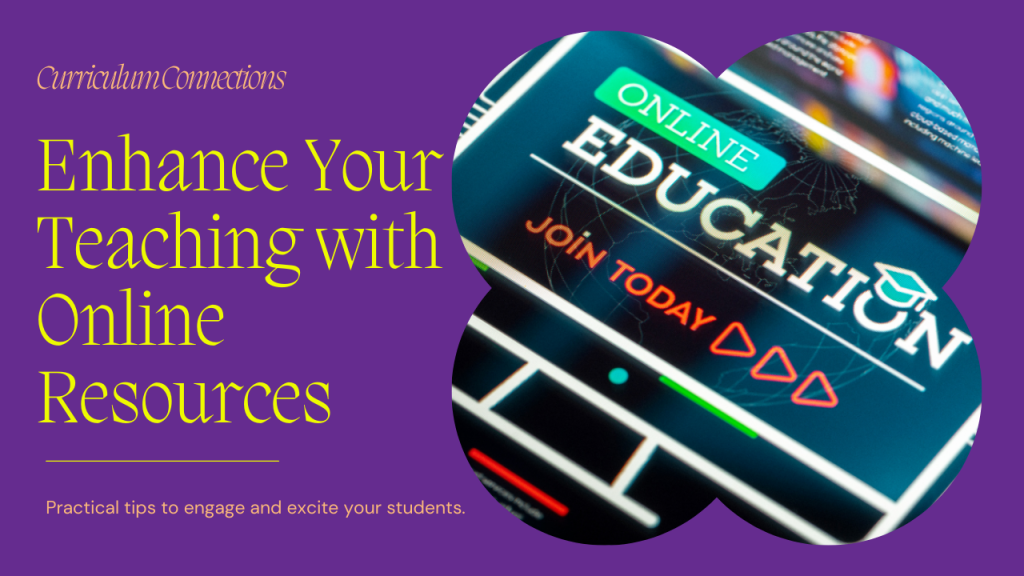
Online resources are a great way to enrich your curriculum and make learning more interactive and fun for your students. Whether you are teaching online, hybrid, or face-to-face, there are many ways to use online resources to support your learning objectives and enhance your students’ engagement. Here are some tips on how to use online resources effectively in your teaching.
- Choose online resources that align with your curriculum and learning outcomes. Before you start browsing the internet for online resources, you should have a clear idea of what you want your students to learn and how you want them to demonstrate their learning. This will help you narrow down your search and select online resources that are relevant, appropriate, and aligned with your curriculum standards and learning outcomes.
- Evaluate the quality and credibility of online resources. Not all online resources are created equal. Some may contain inaccurate, outdated, or biased information. Some may not be suitable for your students’ age, level, or background. Some may not be accessible or user-friendly. Therefore, you should always evaluate the quality and credibility of online resources before you use them in your teaching. You can use criteria such as authority, accuracy, currency, coverage, objectivity, and accessibility to assess online resources.
- Integrate online resources into your lesson plans and activities. Online resources should not be used as a substitute for your instruction, but rather as a supplement or enhancement. You should integrate online resources into your lesson plans and activities in a way that supports your learning objectives and engages your students. For example, you can use online resources to introduce a topic, provide background information, illustrate a concept, demonstrate a skill, practice a strategy, reinforce a point, extend a discussion, or assess learning.
- Provide guidance and support for using online resources. Online resources can be overwhelming or
confusing for some students, especially if they are not familiar with the technology or the content. Therefore,
you should provide guidance and support for using online resources in your teaching. You can do this by:.
- Providing clear instructions and expectations for using online resources
- Modeling how to use online resources effectively and appropriately
- Providing scaffolding and differentiation for different levels of learners
- Monitoring and facilitating students’ use of online resources
- Providing feedback and reflection on students’ use of online resources
- Encourage collaboration and communication using online resources. Online resources can also
be used to foster collaboration and communication among your students. You can use online resources to
create opportunities for students to work together, share ideas, exchange feedback, and learn from each other.
For example, you can use online resources to:.
- Create collaborative projects or assignments using online tools.
- Facilitate online discussions or debates using forums or chat rooms
- Encourage peer review or feedback using rubrics or checklists.
- Showcase students’ work or achievements using portfolios or blogs.
- Connect with other classrooms or experts using video conferencing or social media.
In Conclusion
Using online resources can enhance your curriculum and engage your students in meaningful and enjoyable learning experiences. However, you should always use online resources with care and purpose, and ensure that they support your learning objectives and meet your students’ needs.